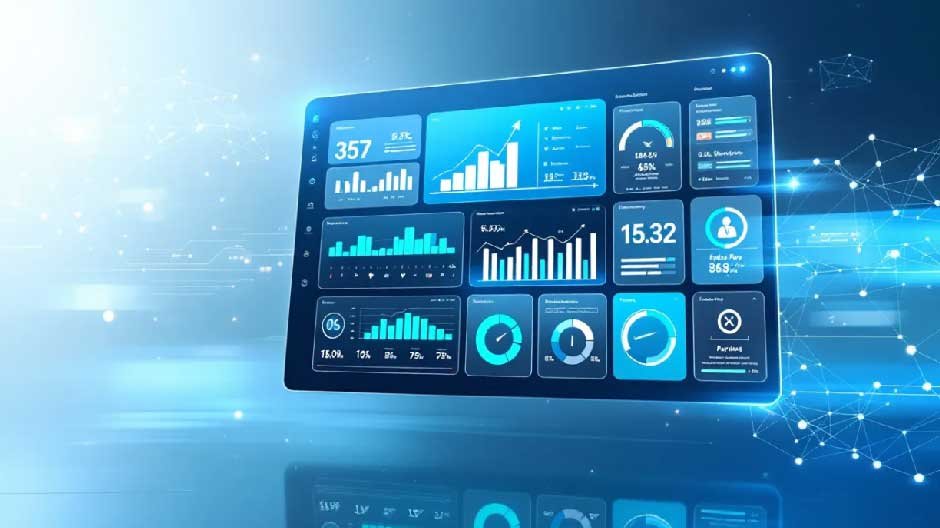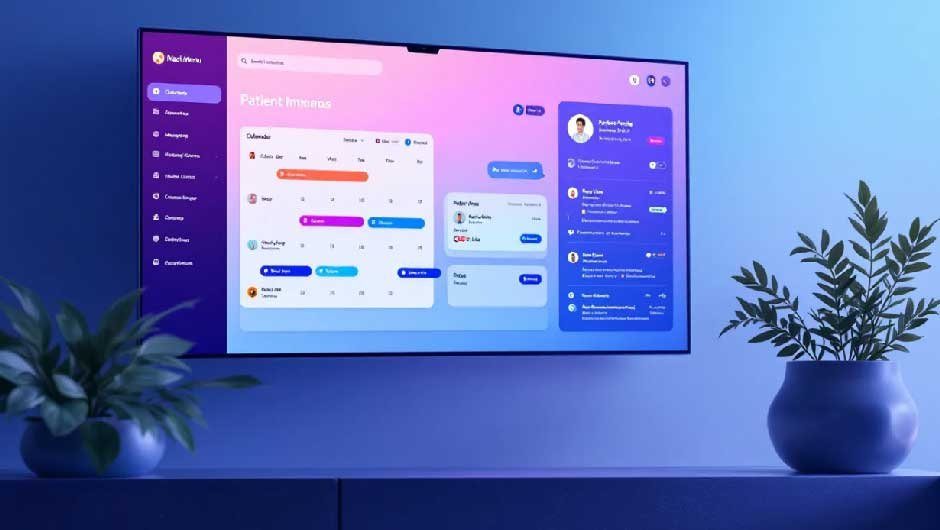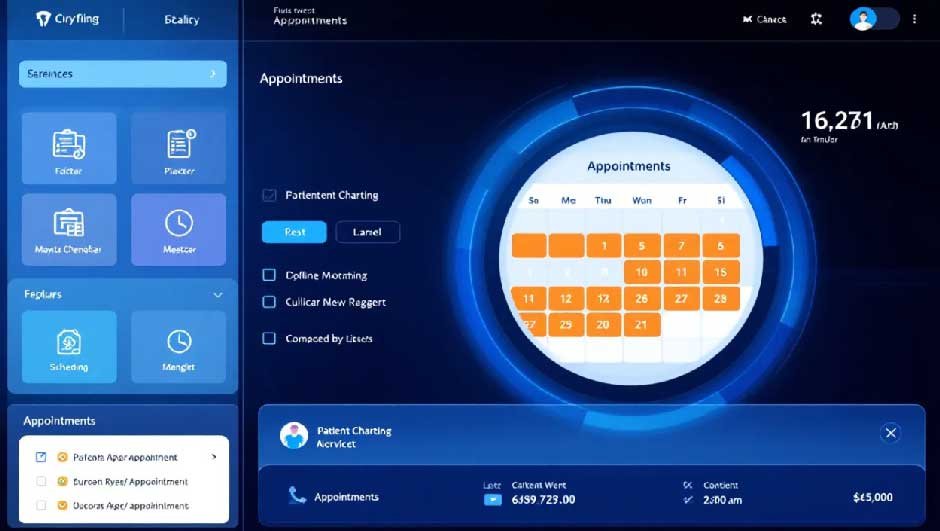Skip to the good bit
ToggleIn 2025, the right software can dramatically improve the way medical practices operate, from enhancing clinical workflows to elevating the patient experience. Tools like electronic health records (EHR) and telemedicine platforms are transforming how care is delivered, enabling faster access to medical data, more efficient consultations, and better communication between providers and patients. As digital health becomes the norm, leveraging these technologies is essential for staying competitive and responsive.
To fully realize these benefits, many practices are turning to custom healthcare software development. Tailored solutions allow providers to address their specific operational needs, integrate seamlessly with existing systems, and adapt to evolving regulatory and patient demands. Whether it’s automating billing, improving scheduling, or building a more intuitive patient portal, custom development ensures that healthcare software works as an enabler—not a barrier—to quality care.
Electronic Health Records (EHR) Software
The advent of electronic health records (EHR) software has significantly transformed the management of patient information within the healthcare sector. It equips healthcare professionals and practitioners with immediate access to medical records through a distinct ID, a vital feature during emergencies when swift retrieval of crucial health data can be life-saving. This capability facilitates fluid exchange of data across various healthcare organizations, promoting an integrated care continuum. Electronic health records guarantee that necessary patient details and digital documentation are easily accessible whenever required.
By implementing EHR systems for digitizing medical documents, there have been substantial enhancements in healthcare quality. Clinicians benefit from EHR software because it offers expansive access to patients’ comprehensive data sets, supporting enhanced outcomes for patients due to more informed decision-making processes. These systems help simplify procedural flows, alleviate administrative workloads, and diminish expenses—contributing to the effectiveness and economic feasibility essential for elevating standards in care delivery.
In today’s landscape where fostering patient engagement is increasingly critical, EHR systems serve as key instruments. They interface with patient portals using APIs which provide individuals the means to view their own health records including diagnostic results and proposed treatment strategies. This empowers them towards active participation in their own healthcare journey. Such transparency paired with easy accessibility catalyzes greater levels of satisfaction among patients while simultaneously advancing overall treatment results—a testament to becoming foundational elements within progressive healthcare practices.
Telemedicine Applications

Applications of telemedicine are gaining widespread popularity as they allow patients to access healthcare services conveniently, leading to an uptake in their usage. These applications boast various advantages such as:
- Enhanced patient contentment due to the flexibility of scheduling appointments
- Minimized necessity for travel
- The comfort of consulting with doctors from one’s own home, which improves the overall patient experience.
The integration of cutting-edge technologies like artificial intelligence into telemedicine platforms has raised the level of care provided by:
- Aiding healthcare professionals in diagnosing and treating ailments with greater precision and efficiency
- Optimizing operational workflows
- Enabling prompt medical actions that can decrease visits to emergency rooms.
Telemedicine is recognized for being a financially viable option for both individuals seeking medical attention and those providing it. It helps lower expenses associated with traveling for patients while improving providers’ productivity, contributing to more effective management of healthcare costs. Numerous telemedicine platforms incorporate educational material tailored specifically for patients, offering relevant information and resources catered to personal health requirements.
Medical Billing Software
Healthcare providers are experiencing transformative benefits from the use of medical billing software, which streamlines claims submission through automation. The significant uptick in revenue and reduced administrative workload for staff underscore this technology’s impact on the sector. By alleviating much of the manual work involved in medical billing, professionals can devote more time to patient care instead of being bogged down by paperwork.
One major advantage offered by these billing systems is their ability to drastically cut down on human errors common in clerical tasks. Such inaccuracies can cause serious financial repercussions and payment delays for healthcare services rendered. Automated solutions reduce these costly mistakes, enabling a swift and precise processing of claims that bolsters both fiscal results and operational efficiency within healthcare facilities.
Enhancing its utility, medical billing software provides comprehensive reports that shed light on patterns related to patient invoicing and fiscal administration. These analytics empower administrators with actionable data to fine-tune the revenue cycle management process while maintaining economic stability within their practices or hospitals. Integration of such software into broader healthcare networks facilitates an interconnected environment where all operations mesh seamlessly together for a robustly functioning healthcare ecosystem.
Hospital Management Systems (HMS)

Practice management software serves as a vital tool for large-scale healthcare operations, merging an array of hospital management programs into one expansive and multifunctional system. Such systems are essential for the administration of extensive health practices and hospitals, covering crucial areas such as medical records maintenance, charting processes, and financial dealings.
Automating mundane tasks is a core function of these HMS platforms.
- Overseeing patient care
- Monitoring inventories
- Conducting billing operations
- Coordinating medical appointments
The introduction of automation enhances operational workflows significantly, promoting seamless day-to-day activities within healthcare facilities. By minimizing time expenditures and diminishing inaccuracies in routine procedures, this advancement not only simplifies managerial duties but also contributes to superior quality in patient treatment services alongside facilitating the dissemination of information about improved outcomes among patients.
In essence, Hospital Management Systems consolidate all dimensions related to hospital governance—ranging from fiscal accounting to resource allocation like bed assignments. The integration seen with components such as appointment scheduling interfaces and electronic health record (EHR) systems when combined with practice management software augments collaboration across different divisions amongst the medical team members which foster enhanced results in both revenue cycle efficiency and overall delivery mechanisms focused on patient wellness.
Patient Engagement Software

Patient engagement software has emerged as an essential component in the realm of contemporary healthcare, serving to bolster interactions between medical providers and their patients. Key functionalities offered by this software include:
- Reminders for care activities and tailored health management tools that maintain patient involvement
- Automated alerts for laboratory results enabling swift patient access
- Timely prompts regarding medications to support compliance with prescribed treatment regimens
Such features play a significant role in enhancing recovery outcomes.
Integral aspects of these platforms include Health Risk Assessments (HRAs) and screenings aimed at identifying gaps in care, thereby allowing healthcare professionals to uncover and tend to unmet needs within their patient populations. Such customized attention fosters improved therapeutic interventions resulting in superior health outcomes.
Language translation capabilities are frequently embedded within such software solutions, guaranteeing that patients who do not speak English can still receive fair access to healthcare services. Personalized digital outreach via multiple channels Amplifies patient participation by ensuring communication is catered specifically to individual preferences or requirements. These advancements collectively enhance satisfaction rates among patients while promoting more effective overall management of their health conditions.
Medical Imaging Software
The significance of medical imaging software in healthcare is profound, as it transforms scans from MRI, CT, and PET into detailed images. This technology is particularly essential in specialties such as cardiology, oncology, and radiology due to its ability to produce precise visuals necessary for both diagnosing ailments and strategizing treatment plans.
Incorporating artificial intelligence (AI) and machine learning (ML) has been a game-changer in the domain of medical imaging software. Advancements brought about by AI/ML include:
- Automated analyses that markedly enhance both the speed at which images are processed and their precision.
- Detection capabilities for serious health threats like potential heart attacks or lung anomalies.
- The delivery of indispensable insights that facilitate prompt clinical actions.
Experiencing rapid expansion with an anticipated 7.7% compound annual growth rate through to 2027 reflects soaring demands for cutting-edge diagnostic instruments. Educational models derived from this software serve crucially as instructive tools that bolster medical training programs thus improving healthcare education services overall.
Health Tracking Apps
Mobile applications designed for health tracking, known as mHealth apps, are now essential tools for those dealing with chronic illnesses. These apps aid in self-care by enabling users to monitor vital health indicators such as weight, dietary habits, and physical activity levels. The ability to self-monitor allows patients to steer their own health management and make knowledgeable choices.
A number of these health tracking applications include social support elements that help increase user engagement and encourage responsibility among early adopters. Although there is a promise in using such apps, definitive evidence confirming their effectiveness in the control of chronic diseases has yet to be established.
Regardless of this lack of conclusive proof, features within these mobile apps that offer personalized feedback and assist users in setting targets play a significant role in enhancing overall well-being and lead to better health outcomes.
Practice Management Software

Practice management software is designed to coordinate crucial clinical operations, including the scheduling of appointments, allocation of rooms, billing procedures, and inventory control. These systems are crafted to refine every aspect of medical practice administration by enhancing operational efficiency and diminishing the load associated with routine administrative duties through the use of medical office software.
When practice management systems are incorporated alongside Electronic Health Records (EHR), they boost both usability and practicality for healthcare providers. Noteworthy considerations include:
- The capability for these systems either to link up with an EHR or operate as independent units offers versatility for practices.
- Practice management software’s automated features lessen reliance on manual processes.
- Such automation bolsters precision in tasks such as verifying insurance details and managing patient intake data.
Prior to adopting EHR solutions, numerous doctors had already begun utilizing practice management software due primarily to its integral connection with billing and coding activities. These sophisticated systems amalgamate various components that include:
- Patient records maintenance
- Billing information organization
- Appointment scheduling
All within a singular platform that fosters heightened organizational effectiveness. This unified approach contributes significantly towards enriched patient care quality and streamlines overall practice workflows.
E-prescriptions Software
Medical software designed for e-prescriptions simplifies the management of prescriptions by minimizing paper-based documentation and mitigating prescription fraud. It offers patients an effective and convenient method to request prescriptions and purchase their medications via the internet.
Through this software, doctors have the ability to efficiently manage, update, or revoke prescriptions, which guarantees that patients get the appropriate medicines without delay. Because this software integrates with national drug reference databases, it allows physicians to prescribe accurately, thereby increasing both the safety and efficacy of prescribing practices.
Medical Research and Analytics Software
Healthcare delivery and patient care are significantly improved through the utilization of medical research and analytics software. EHR systems incorporate healthcare software that provides:
- Immediate access to a patient’s medical history, which is critical for informed clinical decision-making
- Tools for analytics and decision support that increase efficiency
- Streamlined processes for managing referrals
For clinical trials, specialized software integrates real-world data to enhance research effectiveness. Clinical research analytic platforms facilitate rapid simulations to refine strategies for trial participant enrollment. Secure cloud-based repositories maintain large volumes of clinical information safely, promoting effective and protected research activities.
Robust analytical tools enable the development of adaptable models used in analyzing data within a clinical context. These innovative solutions contribute significantly to advancements in medical research, paving the way towards novel treatments and therapies that improve outcomes in patient health care management.
Summary
The incorporation of a diverse range of healthcare software has revolutionized the way medical practices operate. Technologies such as electronic health records (EHR), telemedicine applications, patient engagement platforms, and medical billing software have optimized processes, enhanced the quality of patient care, and increased overall efficiency. These systems facilitate automation and interoperability, allowing healthcare providers to focus on delivering top-notch care while reducing administrative tasks.
Looking ahead, ongoing enhancements in healthcare software are expected to drive Breakthroughs. For healthcare organizations striving to maintain a leading position in providing medical care, adopting these technological solutions is essential. The move toward an efficient system centered around patients continues at full pace with these tools playing a pivotal role in this transformational journey.







